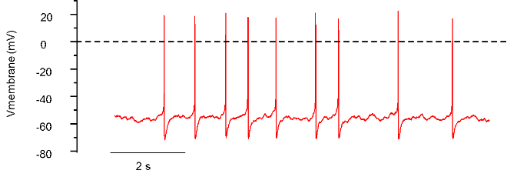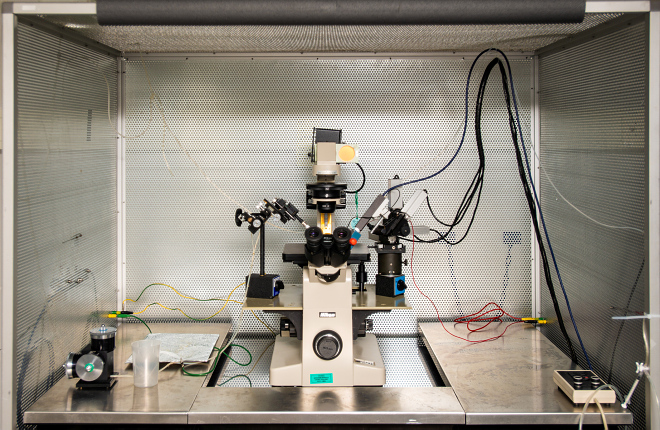About the group
We investigate the role of different ion channels in the regulation of secretion. Originally, the focus has been on how secretion of hormones from pituitary cells is regulated. We are now transferring this experience to the world of oral biology, and will in the future also study the role of the same ion channels in regulation of saliva secretion. As part of the Oral Physiology and Cancer Research Group, we will also investigate the role of ion channels and electrophysiological signals in tumor development and tumor/host interactions.
Main objectives
- Unravel the role of Ca2+ signaling and Ca2+-activated K+ and Cl- channels in secretion and secretion control in salivary acinar and duct cells
- Study how ion channel expression in fibroblasts and other stromal cells is regulated by cancer-derived extracellular vesicles and how this putative change in electrophysiological profile affects migratory properties
Projects
Ca2+-activated K+ and Cl- channels in salivary acinar and duct cells
This project is about to start, and will be a collaboration with Hilde K. Galtung at this Department. Much is known about the roles of ion channels in saliva secretion, but still mysteries remain. The large conductance Ca2+-activated K+ channel (BK) for instance, is present in both acinar and duct cells of the salivary glands, and may have more diverse roles than previously acknowledged. We will investigate the participation of this channel both in bulk saliva secretion and in the ACh signaling pathway in acinar cells, as well as its contribution to K+ secretion (and maybe ACh signaling) in duct cells. Our long experience of studying BK channels in pituitary cells will be helpful in starting this new line of investigation.
Cancer-derived extracellular vesicles and their effect on electrophysiological properties and migration
This is a project about to start within the newly formed oral physiology and cancer research group at Institute of Oral Biology. It is well known that extracellular vesicles can induce cells to develop more cancerogenic properties. Some of these changes include up- and down-regulation of certain ion channels, and this regulation is again linked to changes in the ability to migrate, divide and grow. We will study how oral cancer-derived extracellular vesicles affect normal cells in the vicinity, using among other methods also electrophysiological recordings.
Control of secretion in gonadotrope pituitary cells
This project has been a collaboration with Finn-Arne Weltzien at NMBU since 2005. We combine molecular biological and electrophysiological tools to unravel the details of how the hypothalamic releasing hormone GnRH controls gonadotropin production and secretion. In particular, we are interested in how GnRH differentially regulate the two different gonadotropins; LH and FSH. We use the Japanese rice fish, Medaka, as a model organism, and have developed transgenic lines that express GFP in LH-producing cells and RFP in FSH-producing cells, respectively. Please visit the Weltzien group website (nmbu.no) for more information.

Cooperation
Internal collaborators
External collaborators
- Heidi K. Grønlien, Østfold University College, Norway
- Finn-Arne Weltzien, Norwegian University of Life Sciences
